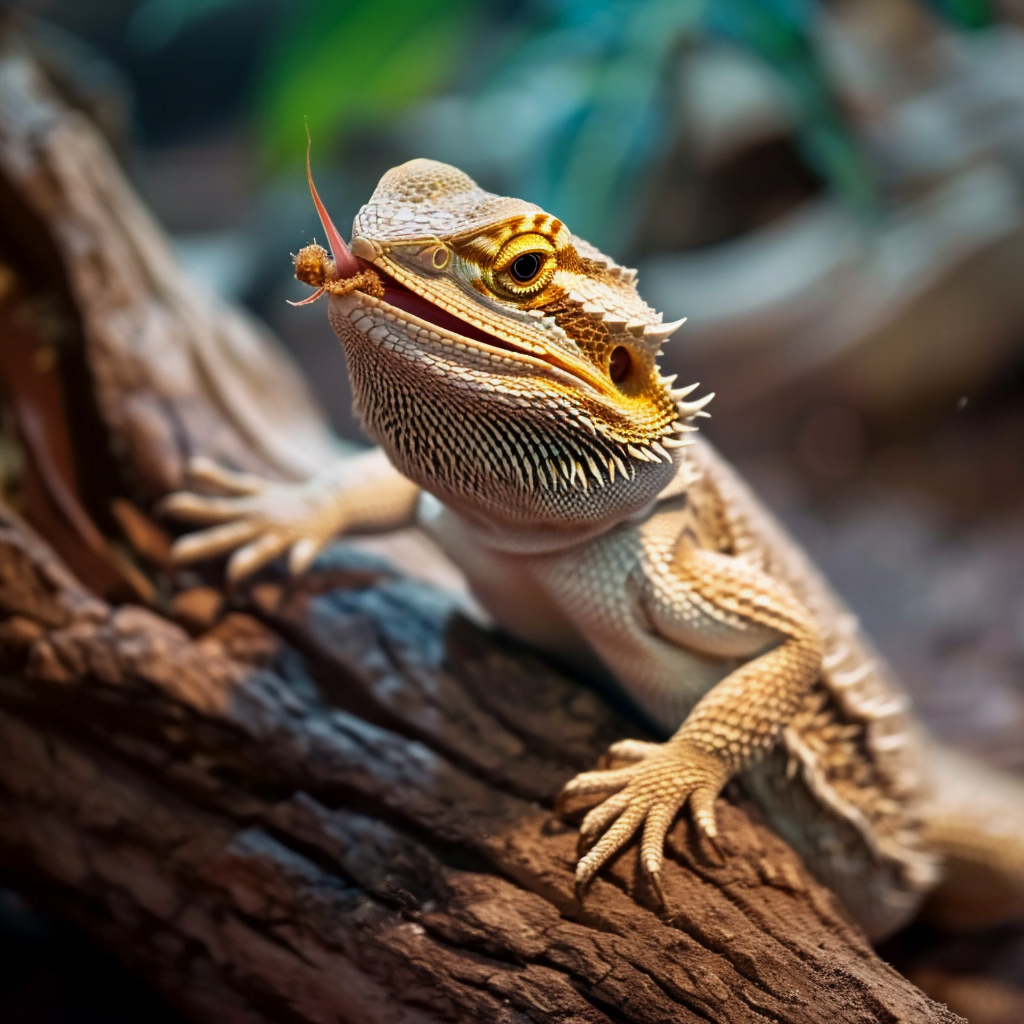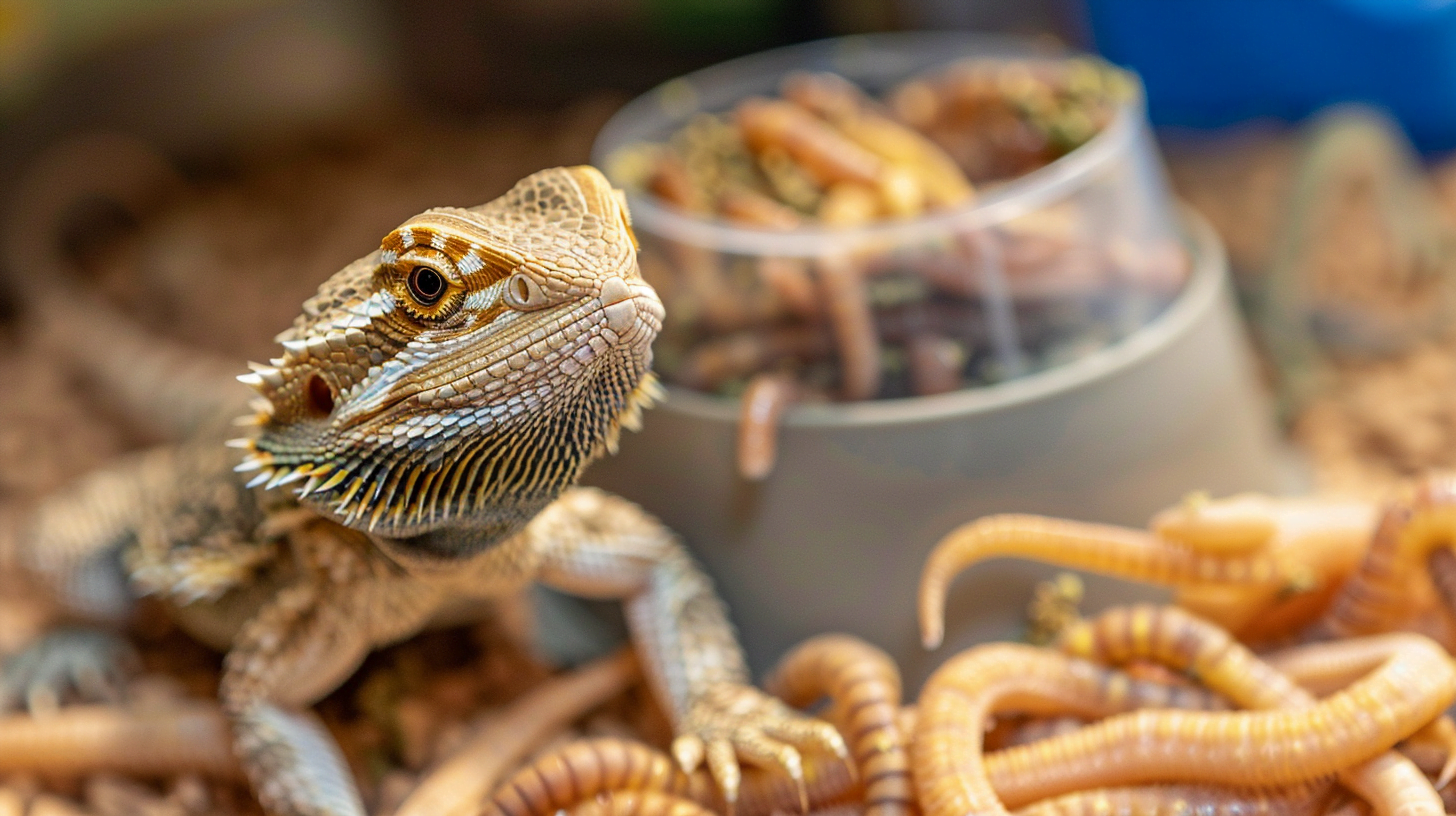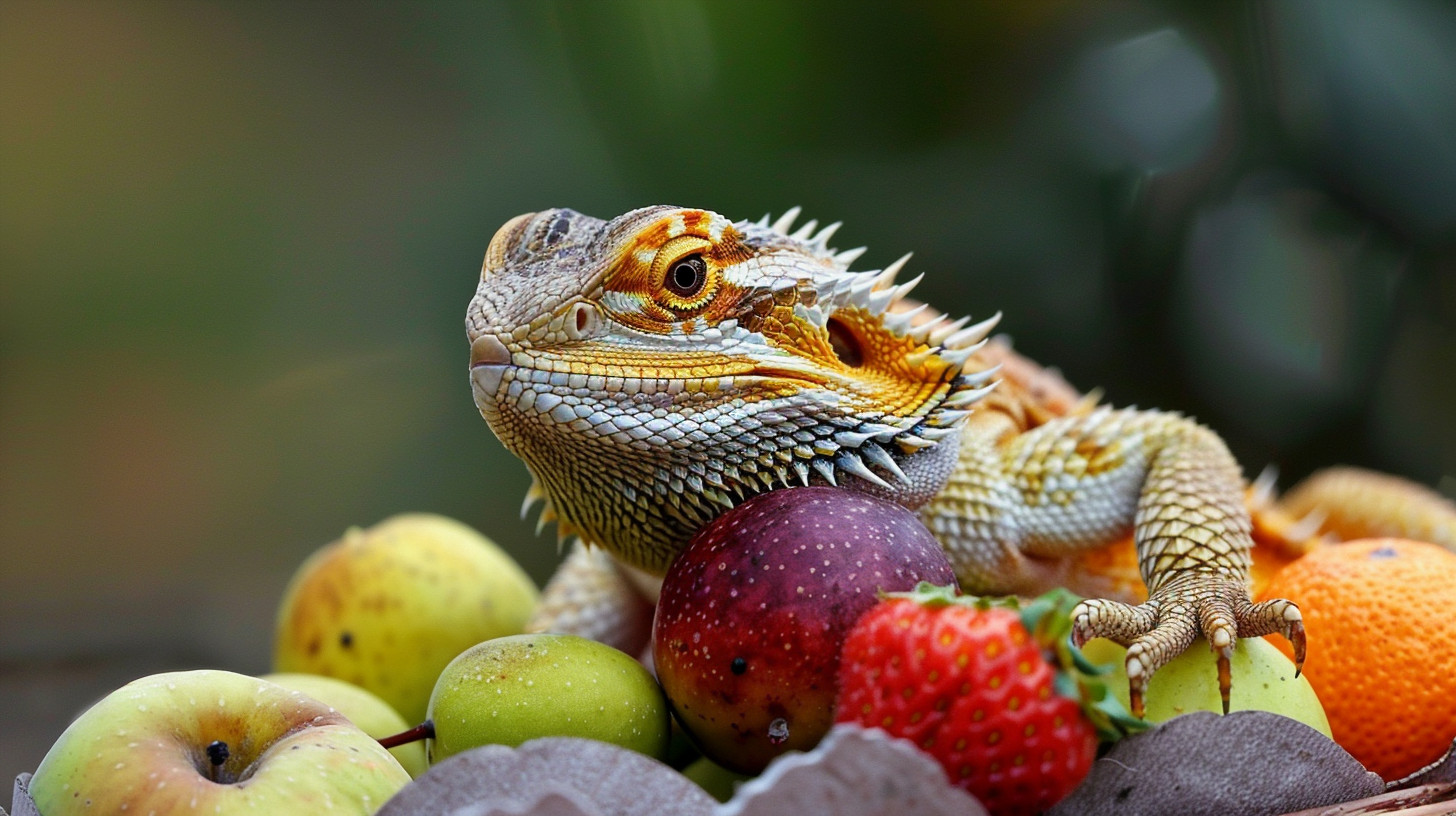For new bearded dragon owners, one of the most common questions is how often and how many bugs they should feed their new scaly friend. While veggies and leafy greens should make up a large portion of a dragon’s diet, especially once they are an adult, feeding nutritious bugs is crucial to their growth, health, and happiness. This comprehensive guide as the title might suggest “How Often Should Bearded Dragons Eat Bugs?” will go over everything you need to know about how often you should feed bearded dragons bugs.
How Often Should Baby Bearded Dragons Eat Bugs?
Baby dragons under 3 months old have some very specific dietary needs. At this stage, where they are rapidly growing, baby bearded dragons actually get most of their nutrition from eating bugs. Baby bearded dragons should eat bugs about 2-3 times per day, and bugs should make up 80% of their total diet.
Quality protein sources from small bugs are vital for their quick growth and development in these early months. Some great options include:
- Small crickets
- Pinhead crickets
- Small roaches
- Calcium worms
- Fruit fly cultures
Feeding a high proportion of bugs will ensure they put on weight and grow quickly in their first months of life. Signs of underfeeding can include lethargy, lack of growth, and a weak tail and muscles. On the other hand, overfeeding bugs to babies can also quickly lead to obesity if their activity is limited.
Aim to feed babies several small meals per day. Allow them 10-15 minutes at each feeding to eat until full. It is generally recommended to feed baby bearded dragons around 15-30 small sized bugs at each meal, 2-3 times daily. The exact number can vary based on the size and needs of the individual dragon.
Always watch for signs they have had enough at each feeding and remove any uneaten bugs after 15 minutes. Their appetite and growth rate can help determine if you need to adjust up or down. The most nutrient-rich and easily digestible bugs are best for babies.
How Often Should Juvenile Bearded Dragons Eat Bugs?
Once a bearded dragon reaches around 4-18 months old, they enter the juvenile phase. Their dietary needs shift somewhat during this stage. Juvenile bearded dragons should be eating bugs about 1-2 times per day, with bugs making up 60-80% of their total diet.
This is the crucial time where their bones and muscles are still developing and growing quickly. Eating calcium rich and vitamin packed bugs will set them up for proper bone formation and muscular growth. Some excellent bug options for juveniles include:
- Dubia roaches
- Phoenix worms
- Silk worms
- Crickets
- Calcium worms
Monitor their growth during this period and adjust feedings accordingly. Larger or more active dragons may need more frequent bug meals. Providing a variety of bug prey also gives a balanced nutritional profile. Dust bugs lightly with calcium supplement to prevent any deficiencies, which are more common in juveniles.
For juvenile dragons, aim to feed around 25-50 medium sized bugs at each meal, once or twice per day. Adjust up or down based on their age, size, and activity level. Allow them 10-15 minutes to eat until full at each feeding. Remove any uneaten bugs.
As they approach 18 months old, start slowly decreasing the portion of bugs to prep for adulthood. Closely follow your exotic vet’s guidance on feeding for healthy growth.
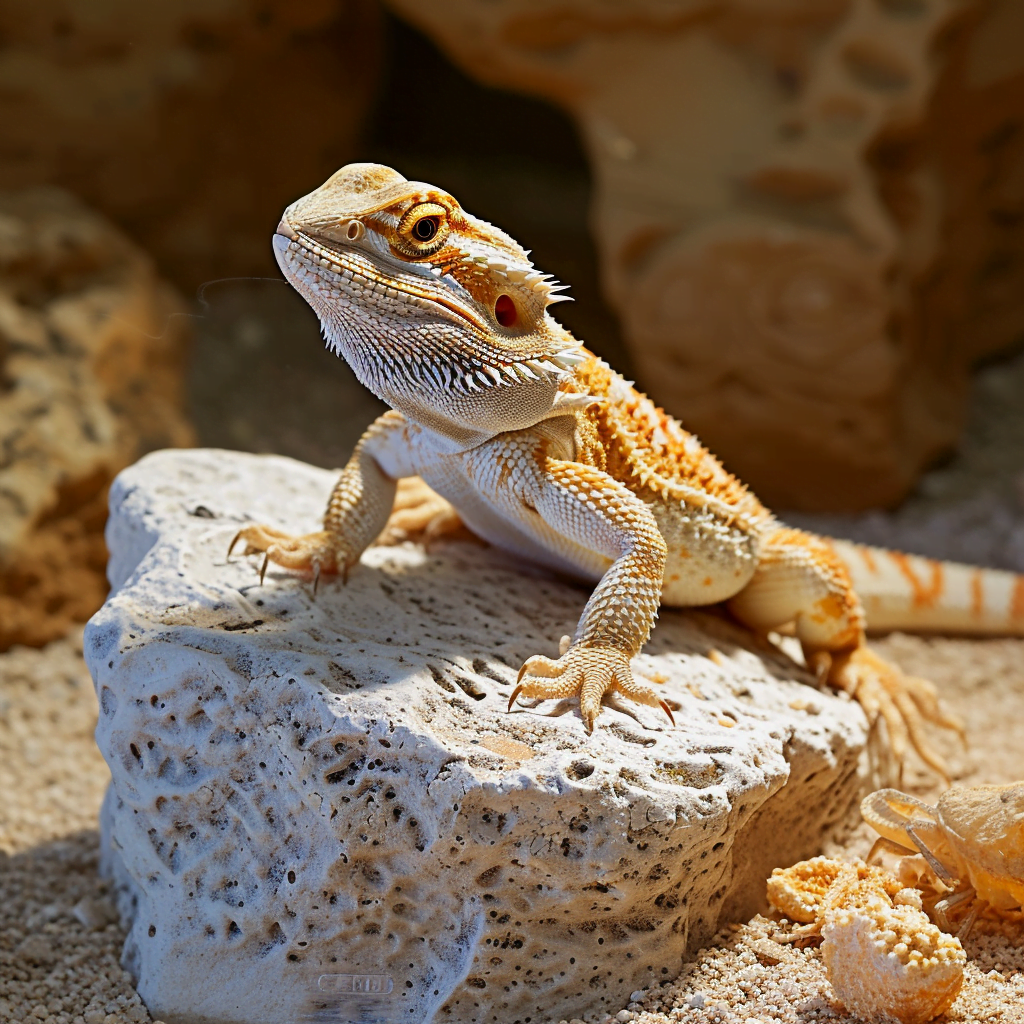
How Often Should Adult Bearded Dragons Eat Bugs?
Once a bearded dragon passes 18 months old, they are considered an adult. At this stage, bug feedings can become less frequent, as veggies and leafy greens now make up the bulk of their diet. Adult bearded dragons only need bugs making up about 20-30% of their total food intake.
You can feed adult dragons bugs like crickets, worms, and roaches just 2-3 times weekly as treats, not staples. Feeding bugs too often to adults can quickly lead to obesity and other health issues if they are not very active. Make sure any bugs fed are appropriately sized and gutloaded for nutrition.
For adults, aim for about 10-15 larger sized bugs per meal, 2-3 times per week. Their appetite for bugs may vary based on factors like breeding season or their individual taste. Observe any decrease in their appetite for bugs as they continue to mature. Their focus should be on leafy greens and veggies.
How Many Bugs Should You Feed Your Bearded Dragon Per Serving?
The number of bugs a bearded dragon should eat per serving depends on several factors:
- Age of dragon: Younger dragons need more bugs at each meal.
- Size of dragon: Larger dragons will eat more bugs than smaller juveniles.
- Type of insect: Crickets and small bugs can be fed in higher amounts than larger worms or roaches.
Here is a general feeding guide per serving for different life stages:
- Baby bearded dragons: 15-30 small bugs
- Juvenile bearded dragons: 25-50 medium sized bugs
- Adult bearded dragons: 10-15 larger sized bugs
At each feeding session, allow your bearded dragon 10-15 minutes to eat their fill of bugs. Do not force feed – let them eat until they lose interest. Remove any uneaten bugs.
Observe their appetite and interest in bugs. Increased appetite can signify a growth spurt. Decreased appetite as they mature is normal. Adjust serving sizes gradually.
Bug Feeding Best Practices
Follow these top tips for optimal bug feeding:
- Size bugs appropriately – Make sure any bugs are no larger than the space between your dragon’s eyes. Too large can pose a choking risk.
- Gutload bugs – Gutload your insects with nutritious foods like fresh fruits and vegetables before feeding for higher nutritional content.
- Dust with calcium – Lightly coat bugs in calcium powder to prevent deficiencies, especially for juveniles. Avoid oversupplementing.
- Provide water – Keep fresh, filtered water available at all times. Also be sure to dehydrate feeder insects before feeding for hydration.
- Feed proper ratios – Follow age appropriate guidelines for which percentage of their diet should be bugs vs veggies.
- Variety – Rotate different types of healthy bugs like dubia roaches, crickets, silkworms, etc. Variety provides balanced nutrition.
- Supplements – In addition to calcium, use a multivitamin supplement 1-2 times weekly. Do not over supplement.
- Check temperatures – Ensure your habitat temperatures are optimal. Appetite can decrease if a dragon is too hot or cold.
- Monitor urates – Check the white part of their droppings. Any discoloration could signify organ problems.
- Frequent cleanings – Keep the habitat very clean and remove bug leftovers promptly to prevent bacteria.
Transitioning to an Adult Diet
As your bearded dragon matures into an adult, there are some strategies to help them transition to eating more veggies and greens:
- Slowly decrease bug feedings starting around 15 months old. Reduce portion sizes every few weeks.
- Offer a wide variety of vegetables like bell peppers, butternut squash, carrots, etc. Periodically reintroduce foods.
- Use bee pollen sprinkled on greens to encourage eating.
- Consider recommended appetite stimulants if needed. Consult an exotic vet.
- Hand feed greens and veggies to associating you with eating plants.
- Never leave live insects unattended, as they may bite your adult dragon when not hungry.
With patience and persistence, you can get an adult dragon eating their required diet of primarily leafy greens and vegetables with fewer bugs.
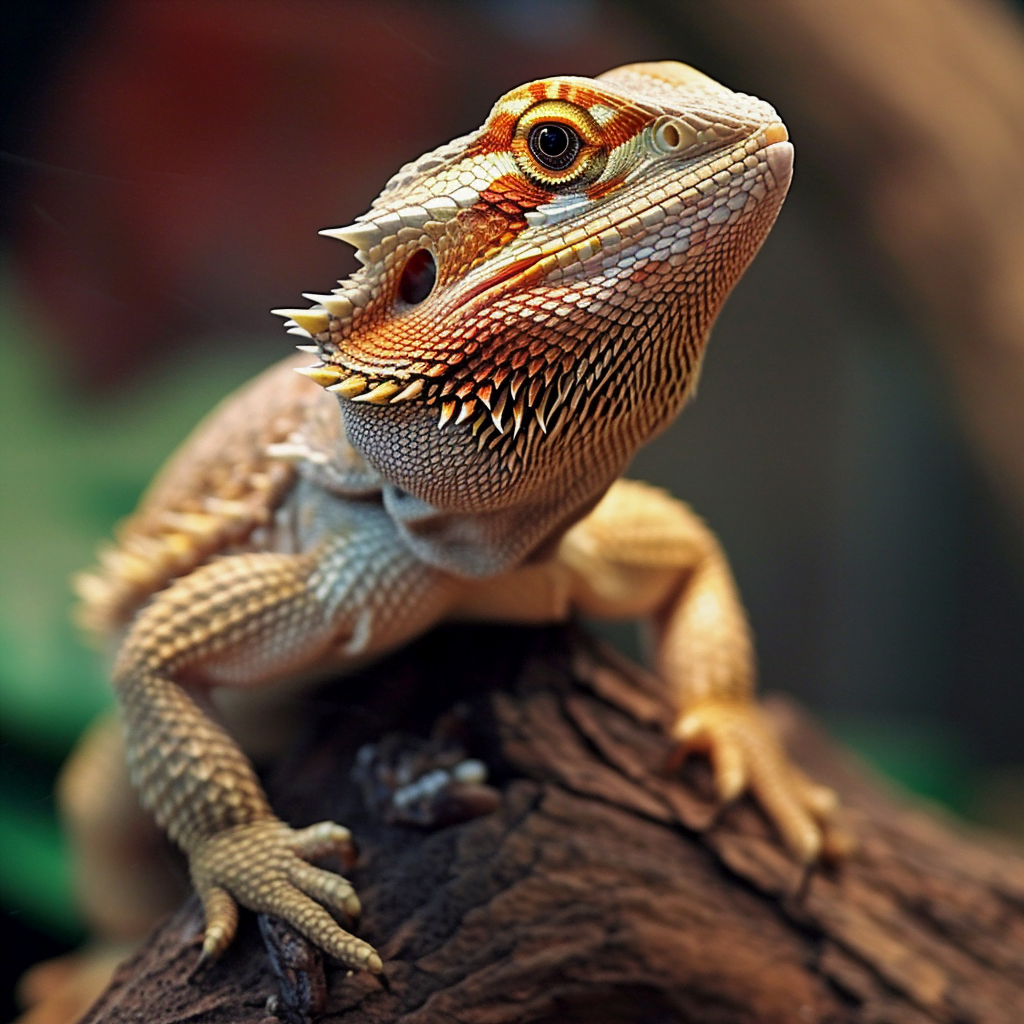
Signs Your Bearded Dragon Isn’t Eating Enough Bugs
If your bearded dragon suddenly loses interest in eating bugs, watch for these signs of being underfed:
- Lethargy and decreased activity
- Lack of normal growth and weight gain
- Weak muscles or limbs
- Dark black beard, signaling stress
- Discolored urates or droppings
- Loss of appetite for veggies too
If you notice any of these, try offering bugs more frequently, hand feeding favorite bugs, gently massaging their abdomen after eating, and taking other steps to stimulate their appetite. See an exotic vet if appetite remains decreased.
Health Risks of Overfeeding Bugs
While bugs certainly have an important place in a bearded dragon’s diet, there are risks to overdoing it. Too many bugs can lead to:
- Obesity, especially if activity is limited
- Intestinal impactions from undigested exoskeletons
- Nutritional imbalances if veggies are refused
- Potential for gout from excess animal protein
- Shortened adult lifespan due to liver and kidney strain
That’s why following the age specific bug feeding guidelines outlined here is so important. Focus diet on leafy greens as adults for long term health.
Consulting an Exotic Pet Veterinarian
If you want personalized advice from a qualified professional, consulting an exotic pet veterinarian is highly recommended.
Reptile specialists can:
- Help craft an optimal diet plan based on your bearded dragon’s age, weight, and health status
- Diagnose any underlying issues like parasites or metabolic bone disease causing appetite changes
- Provide supplements if needed for healthy growth and development
- Monitor weight and growth milestones at annual checkups
- Educate you on proper habitat setup, temperatures, and lighting
- Give tips on encouraging veggie eating in picky adult dragons
- Recommend treatment if a bearded dragon stops eating
Working together with an experienced herp vet ensures your dragon is getting all the nutrients they need in the right amounts as they mature. Never be afraid to seek professional advice.
Common Questions on Feeding Bearded Dragons Bugs
Here are answers to some frequently asked questions about feeding bearded dragons bugs and insects:
Can you freeze or refrigerate bugs to store them?
It’s not recommended. Freezing can rupture a bug’s digestive tract and cause bacteria growth. It’s best to buy what you’ll use in a week and keep at room temperature.
How often should bearded dragon bugs be gutloaded?
Always gutload bugs 24-48 hours before feeding by providing them fresh fruits and vegetables high in calcium and nutrients. Avoid lettuce and spinach for gutload as they have low nutritional value.
Can you feed bearded dragons mealworms?
Superworms and mealworms are higher in fat so they shouldn’t be a staple bug. They can be given as a treat in moderation to juveniles over 3 months and adults. Avoid for babies.
What vegetables can be used to gutload insects?
Great veggies for gutloading are carrots, sweet potatoes, collard greens, mustard greens, butternut squash, and turnip greens. Change it up for variety. Use pesticide-free organic produce.
Can waxworms be given to baby dragons?
Avoid waxworms for babies under 12 months old as they are very high in fat. An occasional few can be treats for juveniles and adults if dragons are active and not overweight. Their hard exoskeletons can also cause impactions.
Is it okay to feed wild-caught insects?
It’s safest to avoid wild insects as they could carry pesticides or parasites. Purchase feeders from reputable breeders raised in clean conditions for optimal nutrition and health.
Conclusion
Hopefully this comprehensive guide has helped explain how often and how many bugs bearded dragons should eat at every age to support their growth and health. While veggie intake is important as adults, quality bug feedings are still a critical part of their dietary needs.
Follow the age specific guidelines outlined here for serving sizes at each meal. Observe your dragon’s appetite and behaviors to adjust amounts as needed. Consult an exotic vet for tailored advice. With proper nutrition from a balanced diet of bugs and veggies, your bearded dragon friend will thrive for years to come!
